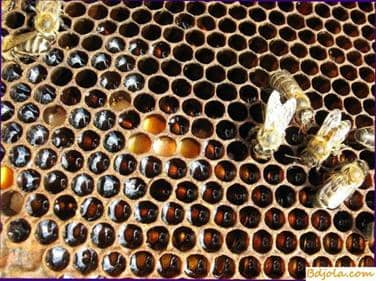
It is necessary to keep records of not only the total amount of wax in the whole apiary, but also take into account the productivity per wax of each family. At the same time, it is common to distinguish between the gross yield of wax and the amount of commercial wax.
The gross output of the beeswax’s wax is all that wax that is allocated and used by the bees of the given family for the season: with the detachment of an artificial honeycomb, for the construction of honeycomb building frames etc. This also includes wax obtained by pumping honey from zabrus, scraps and from all other types of wax raw materials.
It is generally accepted that when the artificial leaf of an artificial honeycomb is completely detached, the bees add 70 g of the wax selected, and when the half-frame is detached on the artificial wax, it is 35 g.
Commodity wax – this is the amount of wax that is obtained during the pasey processing of wax raw materials. It is calculated as a whole in the apiary and represents the amount of wax delivered by the beekeeper to the pantry.
With proper care and maintenance of bees, as well as a good feed base, the gross yield for each hibernating bee family of the apiary is 1 kg or more.
Корма и подкормки пчел. Медовый торт без меда.
Beeswax